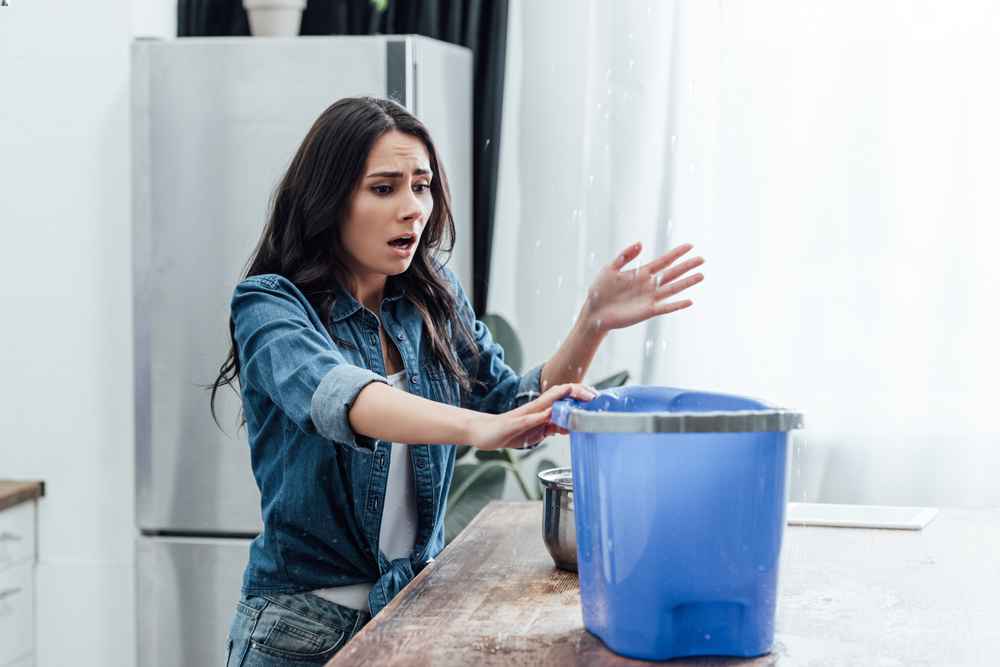If you arrive home to find water flooding onto your front porch, it’s time to take action. After shutting off the water supply, you’ll need to start the water mitigation process as quickly as possible to prevent further damage, such as black mold and mildew.
Here’s what you should do to reduce your losses and begin the cleanup process:
What Are the Causes of Residential Water Damage?
There are many potential causes of residential water damage. Some common causes include:
- Leaky pipes or appliances: A line that has become corroded or damaged can leak water, causing damage to your home. Similarly, devices such as washing machines, water heaters, and refrigerators can also develop leaks.
- Severe weather: Flooding, heavy rain, and storms can all cause water damage to your home.
- Clogged gutters and downspouts: If your gutters and downspouts are clogged, water can back up and cause damage to your roof, walls, and foundation.
- Foundation cracks: If your home’s foundation has cracks, water can seep in and cause damage.
- Plumbing issues: Issues with your home’s plumbing, such as a blocked sewer line, can cause water damage.
- Poorly sealed windows and doors: If your windows and doors are not properly sealed, water can leak in and cause damage.
- Overflowing sinks, toilets, and bathtubs: If a sink, toilet, or bathtub becomes clogged and overflows, it can cause water damage to your home.
The Types of Water Damage
There are three main types of water damage:
- Clean water damage: This type of water damage is caused by clean, clear water that does not pose a health risk. Examples include water from a broken supply line or a leaking appliance.
- Gray water damage: This type of water damage is caused by water that is slightly contaminated and may pose a health risk if ingested. Examples include water from a washing machine or dishwasher.
- Black water damage: This type of water damage is caused by highly contaminated water that can pose serious health risks if ingested. Examples include water from a sewage backup or floodwater. Black water should be handled with extreme caution, and professional remediation is often necessary.
What Water Mitigation Prevents
Water mitigation is the process of taking steps to reduce or prevent water damage. It is vital to take action as quickly as possible after water damage occurs to minimize the risk of further damage and to protect the health of those living in the affected space.
Some of the things that water mitigation can help prevent include:
- Structural damage: Water can weaken the structure of a building, causing it to become unstable or unsafe. Water mitigation helps prevent this type of damage.
- Mold growth: Mold can begin to grow within 24-48 hours of a water damage event. Water mitigation helps prevent mold growth by quickly removing excess water and drying out the affected area.
- Health risks: Contaminated water can pose serious health risks if ingested. Water mitigation helps prevent these risks by properly cleaning and disinfecting the affected area.
- Loss of personal property: Water damage can ruin personal property such as furniture, appliances, and electronics. Water mitigation helps prevent the loss of these items by quickly drying out the affected area and taking steps to restore damaged items.
Does Water Damage Decrease Your Home’s Value?
Yes, water damage can decrease the value of your home. Water damage can result in costly repairs and, if not appropriately addressed, can lead to further damage, such as mold growth and structural issues. These issues can make a home less appealing to potential buyers and can decrease its value.
It’s crucial to address water damage promptly to minimize the risk of further damage and protect your home’s value. Hiring a professional water damage restoration company to assess the damage and provide appropriate remediation services can mean the difference between protecting or damaging your home’s value.


